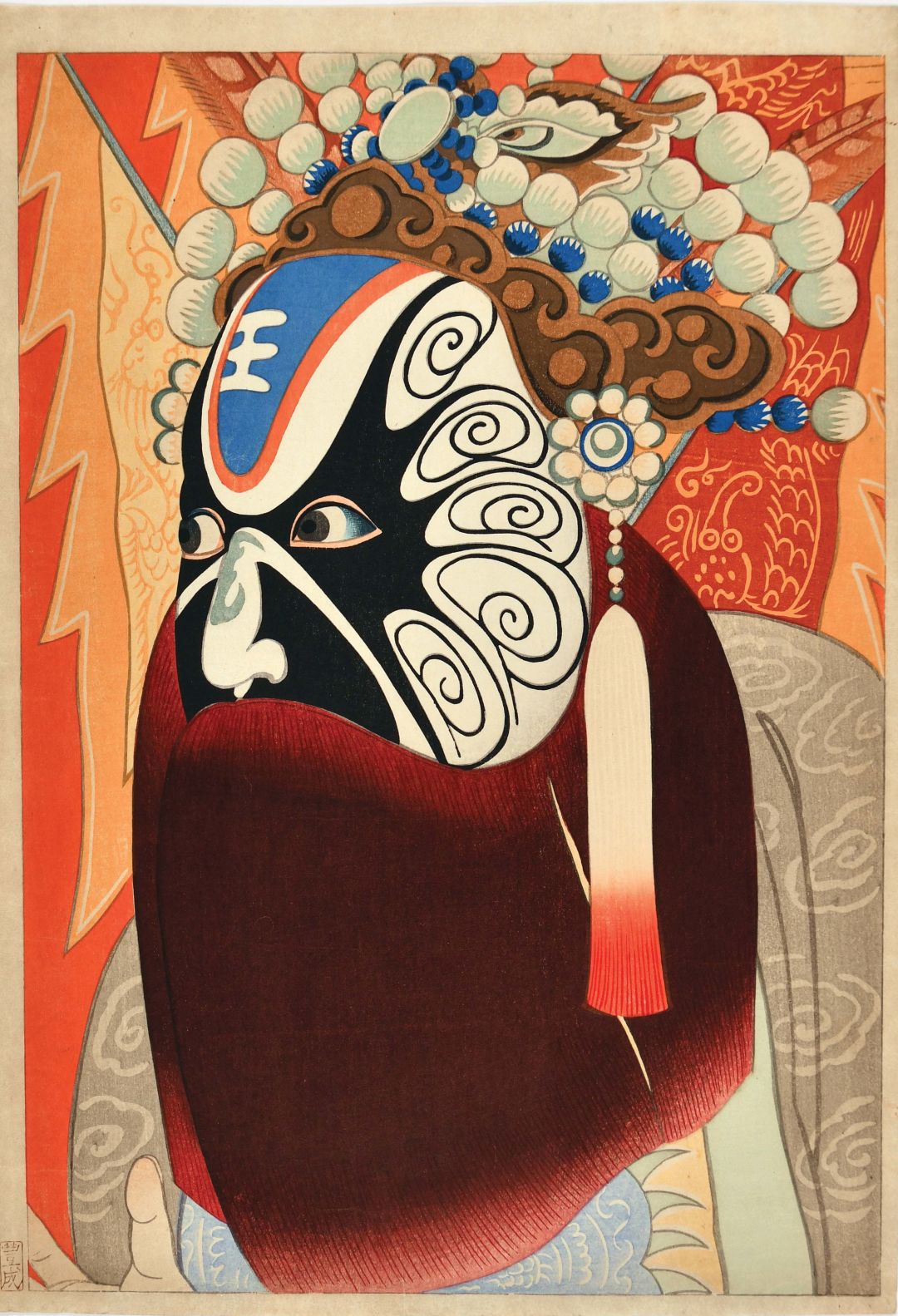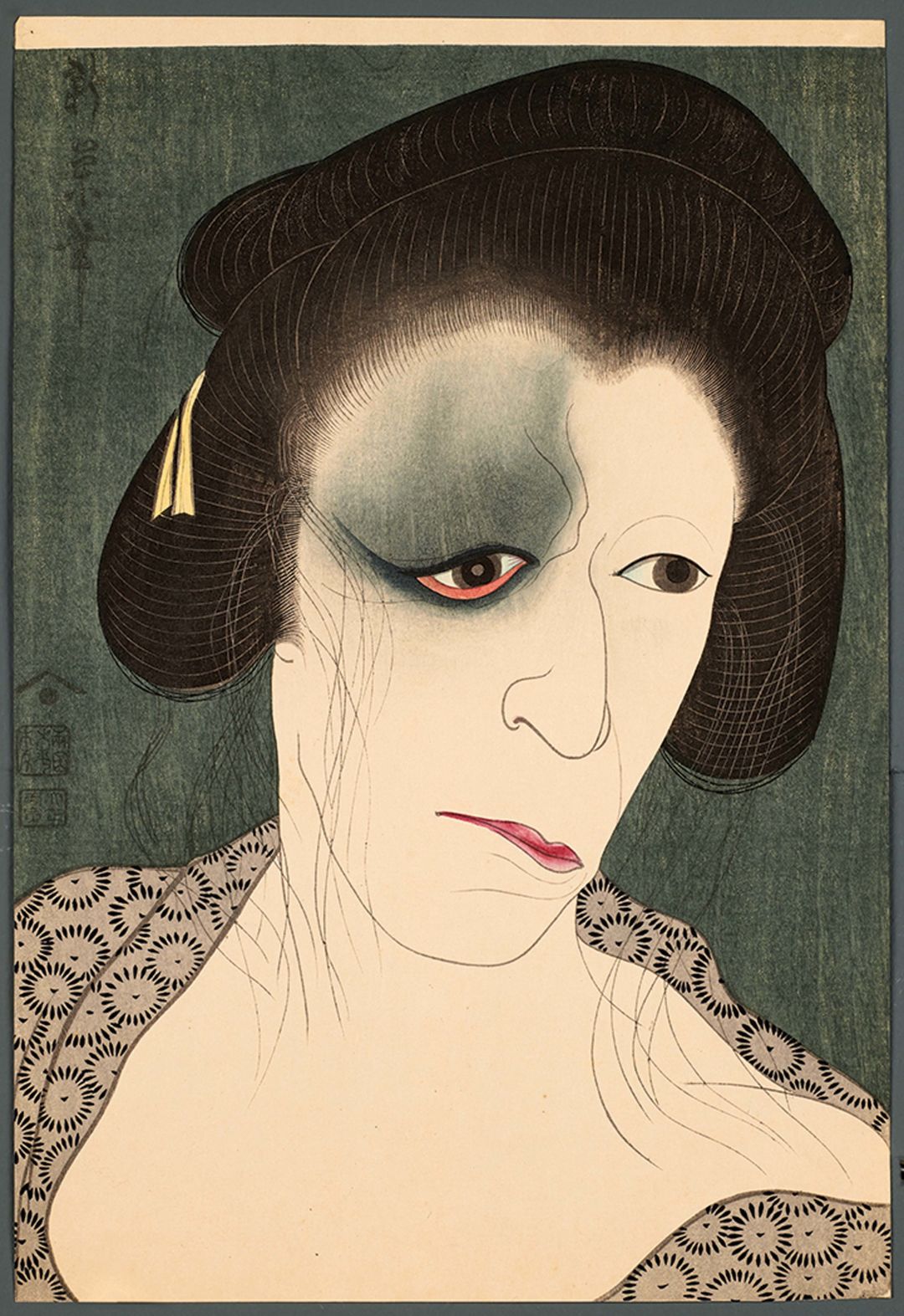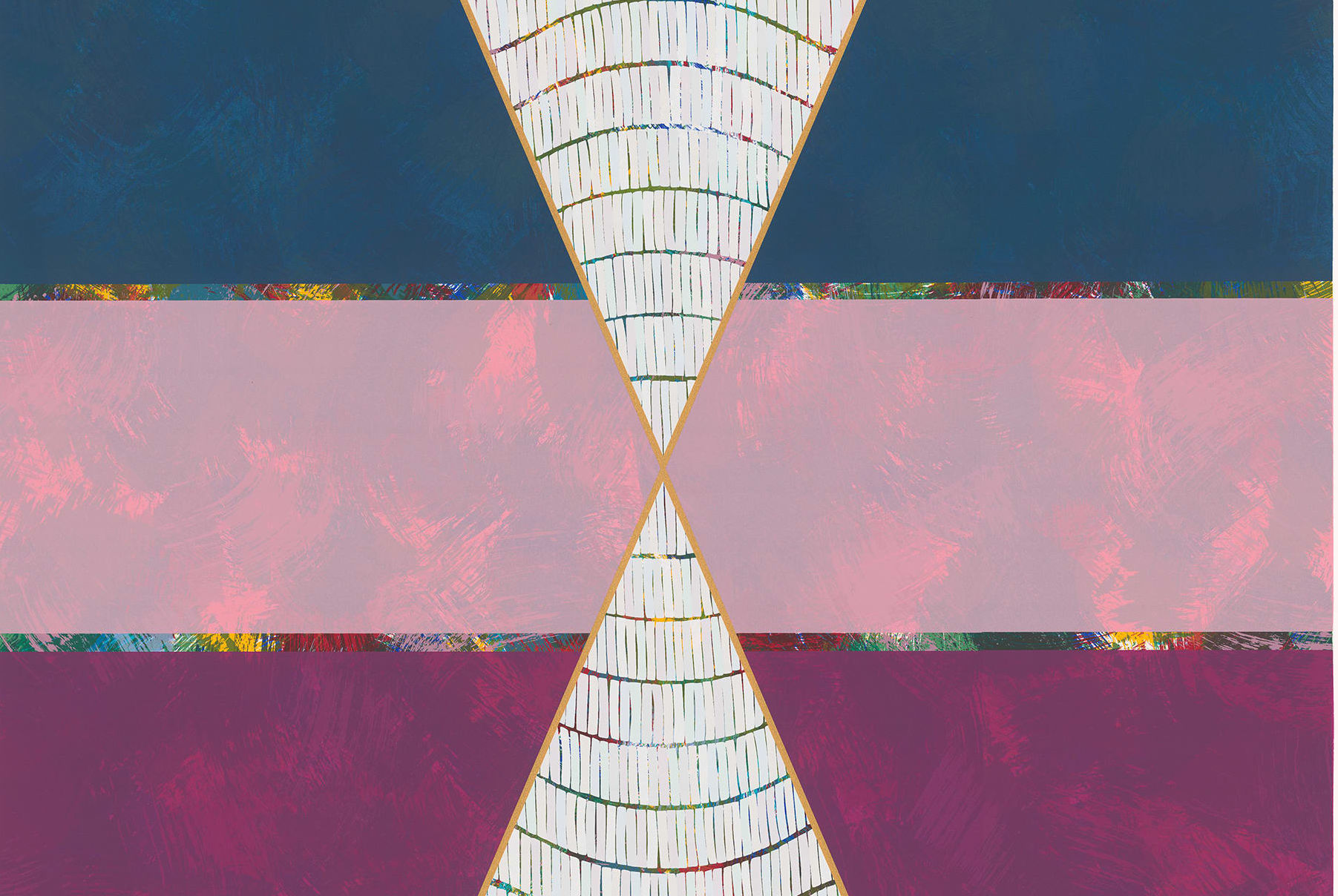A New Exhibit at The Ringling Showcases the Art of Kabuki

Actor in a Chinese Opera, 1924, by Yamamura Köka (Toyonari)
For Dr. Rhiannon Paget, curator of Asian art at the John and Mable Ringling Museum of Art, an interest in the museum’s holdings of Kabuki prints was natural. But a bit of serendipity helped to move forward her idea for the exhibit Kabuki Modern, which will be on view starting Nov. 13.
As Paget tells it, “Back in 2017, I was looking for a sofa at a secondhand shop in Sarasota. I didn’t find one. But I did find this piece—a once-in-a-career thing—a big screen painting dating from 1924, by a promising artist who died young.” [The artist was Murakami Michiho, who died in 1938.] It had ended up in an estate sale in California before making its way here, where it was in two pieces and in dire need of restoration. But, Paget says, “It had great detail, with more than 250 people featured in it.” And, once restored through a six-month process involving its removal from the original mounted folding screen, fabrication of new frames and a little inpainting to restore paint loss (all by Sondra Castile of Asuka Studios), Paget says it’s returned to being “a thing of beauty.”
That screen may be a major draw of Kabuki Modern, but the exhibition also showcases approximately 20 objects related to the Japanese theater art, some from the collection of local residents Chuck and Robyn Citrin, mostly consisting of woodblock prints. Works by Toyohara Kunichika, Yamamura Kōka and Natori Shunsen, among the foremost printers of their time, are included.
For Westerners only vaguely familiar with Kabuki performance, this highly stylized form of theater, featuring glamorous costumes and elaborate makeup along with very involved and lengthy stories, originated back in the 1600s in Kyoto. The first productions were presented by a troupe of itinerant dancers, led by a woman, with cross-dressing common. But that was deemed too provocative and licentious, so women were banned from appearing, and young men, many on the fringes of the samurai class, took over the roles. The Kabuki scene continued to blossom in the 18th, 19th and early 20th centuries.
“The actors were stars,” says Paget, “and their fame was cemented by mass-produced woodblock actor portraits (yakusha-e) that were sold as affordable mementos, along with bespoke paintings for the rich.” As new technologies, such as photography and lithography, took hold, woodblocks were at first supplanted. But then a nostalgia market for the older woodblocks developed.
“These are really gorgeous objects,” say Paget of the pieces in the show. “There’s an eye candy dimension to them. All were produced to the highest standards, with the best quality materials and best craftmanship. No corners were cut.”

Onoe Baiko VI as Oiwa, Number 4 from the series Actor Portraits, 1926, by Shin’ei
One of Paget’s favorite pieces in the exhibit is a portrait of the actor Onoe Baiko from 1926, in the role of the female character Oiwa, depicted with a scar related to her story, portions of which will be shown on film during the exhibit’s run. “She’s a woman terribly wronged by the family she’s married into,” Paget explains. “Her husband wants her money; the family conspires to poison her; she ends up with a massive scar. The husband shows Oiwa her reflection in a mirror, and she accidentally kills herself.”
But wait, there’s more: “She becomes a vengeful ghost and kills off the family, one by one. In a way, that creates a spectacle of women’s suffering, but on the other hand, there is a message that wrongdoing and cruelty will be punished; it’s a moral universe,” Paget says.
In addition to the objects on view in the museum’s Center for Asian Art, Paget will present a virtual gallery talk about the show, at 1 p.m. Dec. 2 via Zoom. The exhibit continues through June 27; for more information, visit ringling.org.



